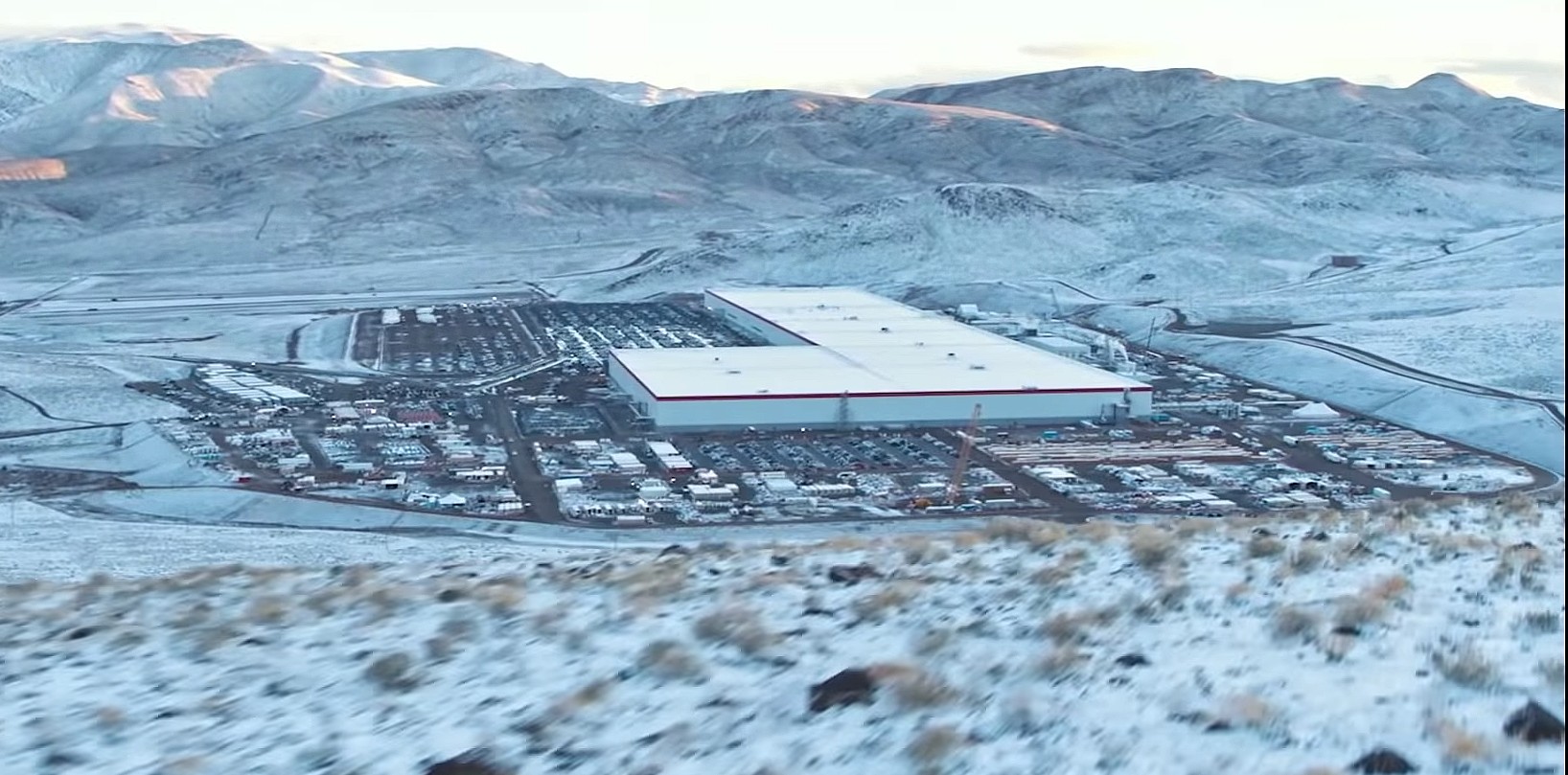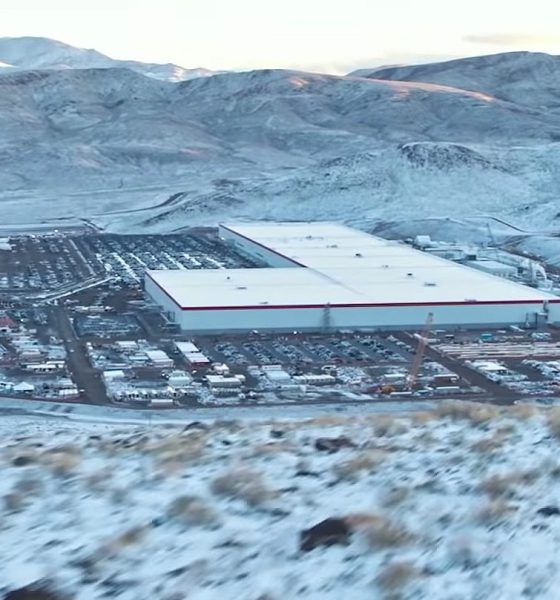

News
Tesla's battery acquisitions are paying off in spades, and giving rivals a lot of pain
There was a time, not too long ago, when Tesla skeptics questioned the company’s focus in designing and producing its own batteries with a dedicated partner like Panasonic and a facility like Gigafactory 1 in Nevada. Batteries, after all, are available off-the-shelf from companies like LG Chem, and it seemed pretty futile for Tesla to insist that it needs its own battery supply for its future business.
Fast forward to 2020, and Tesla’s extreme focus on battery development is paying off in spades. Over the years, Tesla has acquired multiple companies that have, in some way, enabled the company to accelerate or improve its products’ batteries. Included among these are Grohmann Automation, whose machines are the bread and butter in Gigafactory 1, Maxwell Technologies, and more recently, HIBAR systems.
At this point, Tesla’s batteries have pretty much become the gold standard for EVs, and the company appears to be well on its way towards releasing vehicles that have a range of 400 miles or more. The Plaid Model S and X will likely be the first of these, as well as the next-gen Roadster, which will have 620 miles of range. Even the reasonably-priced Cybertruck tops out at over 500 miles of range per charge. Massive battery developments are needed to achieve these, and Tesla seems to have done it, or at least is well on its way.
This does not appear to be true for other OEMs attempting to enter the electric vehicle market. As veteran companies unveiled their EVs, and as none have really managed to hold a candle to Tesla’s flagship Model S in terms of range, it is becoming evident that the electric car maker’s investments in batteries may have actually been the right strategy all along. Daimler, for one, seems to be feeling this inconvenient truth, with works council chief Michael Brecht explaining during a recent interview with Manager Magazin that Tesla’s battery-related acquisitions are actually having an effect on Germany’s EV efforts.
Daimler launched its first EV, the Mercedes-Benz EQC, in 2018, and it has not really lived up to the hype. Despite being dubbed at some point as a potential “Tesla Killer” due to its pedigree and excellent German build quality, the all-electric SUV has faced battery shortages and low sales. Registrations in Germany for the vehicle only show about 55 units sold to date despite all the ad campaigns dedicated to the SUV. Battery supply shortages have also forced Daimler to cut the annual production target of the EQC by 50% from 60,000 to just 30,000.
Quite interestingly, Brecht partly blames Tesla for some of the challenges facing the EQC today. Explaining his points to the publication, he argued that one of the reasons Daimler is struggling with battery demand is because Tesla bought Grohmann Engineering, which has valuable technology that could be used for battery-related developments and activities. Brecht also mentioned that Grohmann was actually hired by Mercedes-Benz to build up its own battery manufacturing capacity.
Brecht’s statements are notable since it is quite rare to see a veteran car manufacturer actually point the finger at Tesla to explain the dire condition of its own EV program. One can only hope that perhaps, the EQC would be a lesson that Daimler could learn from. After all, Daimler, among German automakers, would likely have no issues tapping into Tesla’s established technologies, batteries and powertrains alike, as the two companies have already worked together in the past. Elon Musk has stated that eventually, Tesla may be open to selling its batteries and powertrains with other OEMs. If this were to happen, it would be wise for Daimler to wait right in front of the line to avoid another EQC-sized flop.

Elon Musk
Elon Musk’s X will start using a Tesla-like software update strategy
The initiative seems designed to accelerate updates to the social media platform, while maintaining maximum transparency.

Elon Musk’s social media platform X will adopt a Tesla-esque approach to software updates for its algorithm.
The initiative seems designed to accelerate updates to the social media platform, while maintaining maximum transparency.
X’s updates to its updates
As per Musk in a post on X, the social media company will be making a new algorithm to determine what organic and advertising posts are recommended to users. These updates would then be repeated every four weeks.
“We will make the new 𝕏 algorithm, including all code used to determine what organic and advertising posts are recommended to users, open source in 7 days. This will be repeated every 4 weeks, with comprehensive developer notes, to help you understand what changed,” Musk wrote in his post.
The initiative somewhat mirrors Tesla’s over-the-air update model, where vehicle software is regularly refined and pushed to users with detailed release notes. This should allow users to better understand the details of X’s every update and foster a healthy feedback loop for the social media platform.
xAI and X
X, formerly Twitter, has been acquired by Elon Musk’s artificial intelligence startup, xAI last year. Since then, xAI has seen a rapid rise in valuation. Following the company’s the company’s upsized $20 billion Series E funding round, estimates now suggest that xAI is worth tens about $230 to $235 billion. That’s several times larger than Tesla when Elon Musk received his controversial 2018 CEO Performance Award.
As per xAI, the Series E funding round attracted a diverse group of investors, including Valor Equity Partners, Stepstone Group, Fidelity Management & Research Company, Qatar Investment Authority, MGX, and Baron Capital Group, among others. Strategic partners NVIDIA and Cisco Investments also continued support for building the world’s largest GPU clusters.
News
Tesla FSD Supervised wins MotorTrend’s Best Driver Assistance Award
The decision marks a notable reversal for the publication from prior years, with judges citing major real-world improvements that pushed Tesla’s latest FSD software ahead of every competing ADAS system.

Tesla’s Full Self-Driving (Supervised) system has been named the best driver-assistance technology on the market, earning top honors at the 2026 MotorTrend Best Tech Awards.
The decision marks a notable reversal for the publication from prior years, with judges citing major real-world improvements that pushed Tesla’s latest FSD software ahead of every competing ADAS system. And it wasn’t even close.
MotorTrend reverses course
MotorTrend awarded Tesla FSD (Supervised) its 2026 Best Tech Driver Assistance title after extensive testing of the latest v14 software. The publication acknowledged that it had previously criticized earlier versions of FSD for erratic behavior and near-miss incidents, ultimately favoring rivals such as GM’s Super Cruise in earlier evaluations.
According to MotorTrend, the newest iteration of FSD resolved many of those shortcomings. Testers said v14 showed far smoother behavior in complex urban scenarios, including unprotected left turns, traffic circles, emergency vehicles, and dense city streets. While the system still requires constant driver supervision, judges concluded that no other advanced driver-assistance system currently matches its breadth of capability.
Unlike rival systems that rely on combinations of cameras, radar, lidar, and mapped highways, Tesla’s FSD operates using a camera-only approach and is capable of driving on city streets, rural roads, and freeways. MotorTrend stated that pure utility, the ability to handle nearly all road types, ultimately separated FSD from competitors like Ford BlueCruise, GM Super Cruise, and BMW’s Highway Assistant.
High cost and high capability
MotorTrend also addressed FSD’s pricing, which remains significantly higher than rival systems. Tesla currently charges $8,000 for a one-time purchase or $99 per month for a subscription, compared with far lower upfront and subscription costs from other automakers. The publication noted that the premium is justified given FSD’s unmatched scope and continuous software evolution.
Safety remained a central focus of the evaluation. While testers reported collision-free operation over thousands of miles, they noted ongoing concerns around FSD’s configurable driving modes, including options that allow aggressive driving and speeds beyond posted limits. MotorTrend emphasized that, like all Level 2 systems, FSD still depends on a fully attentive human driver at all times.
Despite those caveats, the publication concluded that Tesla’s rapid software progress fundamentally reshaped the competitive landscape. For drivers seeking the most capable hands-on driver-assistance system available today, MotorTrend concluded Tesla FSD (Supervised) now stands alone at the top.
News
Elon Musk’s Grokipedia surges to 5.6M articles, almost 79% of English Wikipedia
The explosive growth marks a major milestone for the AI-powered online encyclopedia, which was launched by Elon Musk’s xAI just months ago.

Elon Musk’s Grokipedia has grown to an impressive 5,615,201 articles as of today, closing in on 79% of the English Wikipedia’s current total of 7,119,376 articles.
The explosive growth marks a major milestone for the AI-powered online encyclopedia, which was launched by Elon Musk’s xAI just months ago. Needless to say, it would only be a matter of time before Grokipedia exceeds English Wikipedia in sheer volume.
Grokipedia’s rapid growth
xAI’s vision for Grokipedia emphasizes neutrality, while Grok’s reasoning capabilities allow for fast drafting and fact-checking. When Elon Musk announced the initiative in late September 2025, he noted that Grokipedia would be an improvement to Wikipedia because it would be designed to avoid bias.
At the time, Musk noted that Grokipedia “is a necessary step towards the xAI goal of understanding the Universe.”
Grokipedia was launched in late October, and while xAI was careful to list it only as Version 0.1 at the time, the online encyclopedia immediately earned praise. Wikipedia co-founder Larry Sanger highlighted the project’s innovative approach, noting how it leverages AI to fill knowledge gaps and enable rapid updates. Netizens also observed how Grokipedia tends to present articles in a more objective manner compared to Wikipedia, which is edited by humans.
Elon Musk’s ambitious plans
With 5,615,201 total articles, Grokipedia has now grown to almost 79% of English Wikipedia’s article base. This is incredibly quick, though Grokipedia remains text-only for now. xAI, for its part, has now updated the online encyclopedia’s iteration to v0.2.
Elon Musk has shared bold ideas for Grokipedia, including sending a record of the entire knowledge base to space as part of xAI’s mission to preserve and expand human understanding. At some point, Musk stated that Grokipedia will be renamed to Encyclopedia Galactica, and it will be sent to the cosmos.
“When Grokipedia is good enough (long way to go), we will change the name to Encyclopedia Galactica. It will be an open source distillation of all knowledge, including audio, images and video. Join xAI to help build the sci-fi version of the Library of Alexandria!” Musk wrote, adding in a later post that “Copies will be etched in stone and sent to the Moon, Mars and beyond. This time, it will not be lost.”








